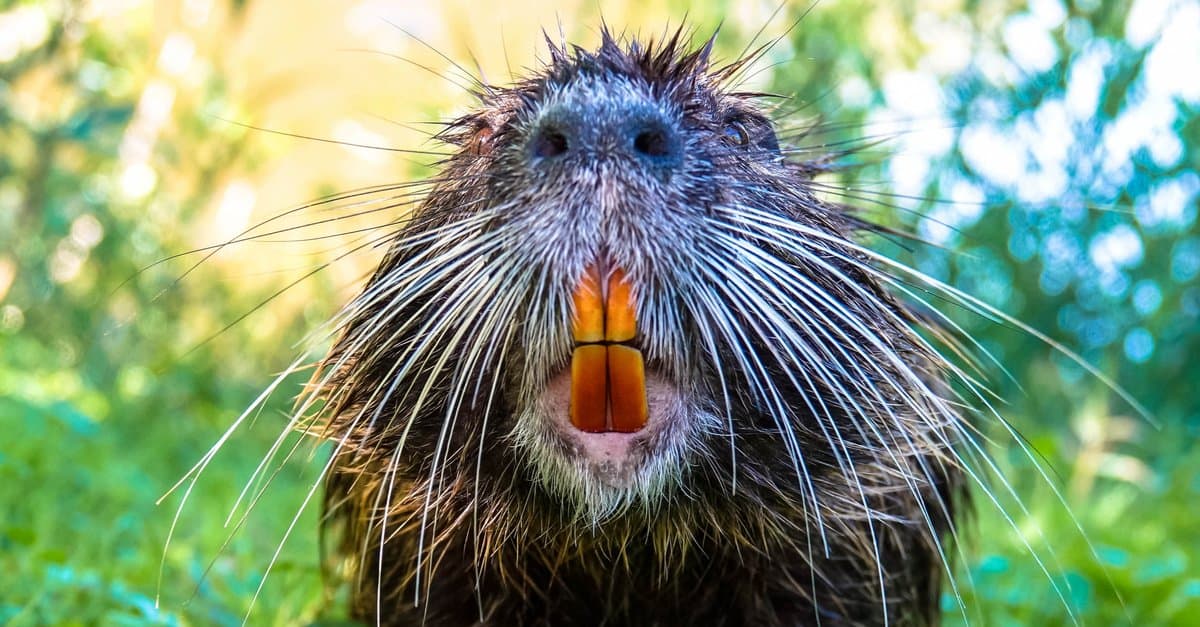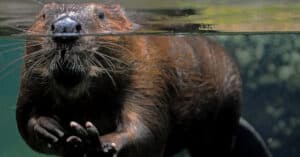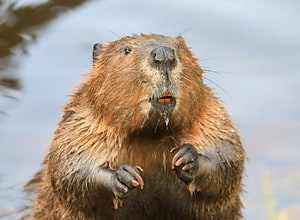A beaver is a wood-chewing mammal from the order Rodentia. It lives a private lifestyle and has the diet of a herbivore. These rodents have large, orange teeth and they use them to chew through wood. What is the purpose of this wood-chewing? Why are the teeth of these furry mammals orange? We’re going to answer these questions and fill you in on some other interesting facts about beavers.
Why Do Beavers Chew Wood?
Beavers chew wood for three main reasons. The first is because wood is a main food source for them. The second is because they use it to build dams and lodging. The third is for dental hygiene. Rodent teeth never stop growing, so they need to file them down to keep them healthy and in good working order.
Why Do Beavers Have Orange Teeth?
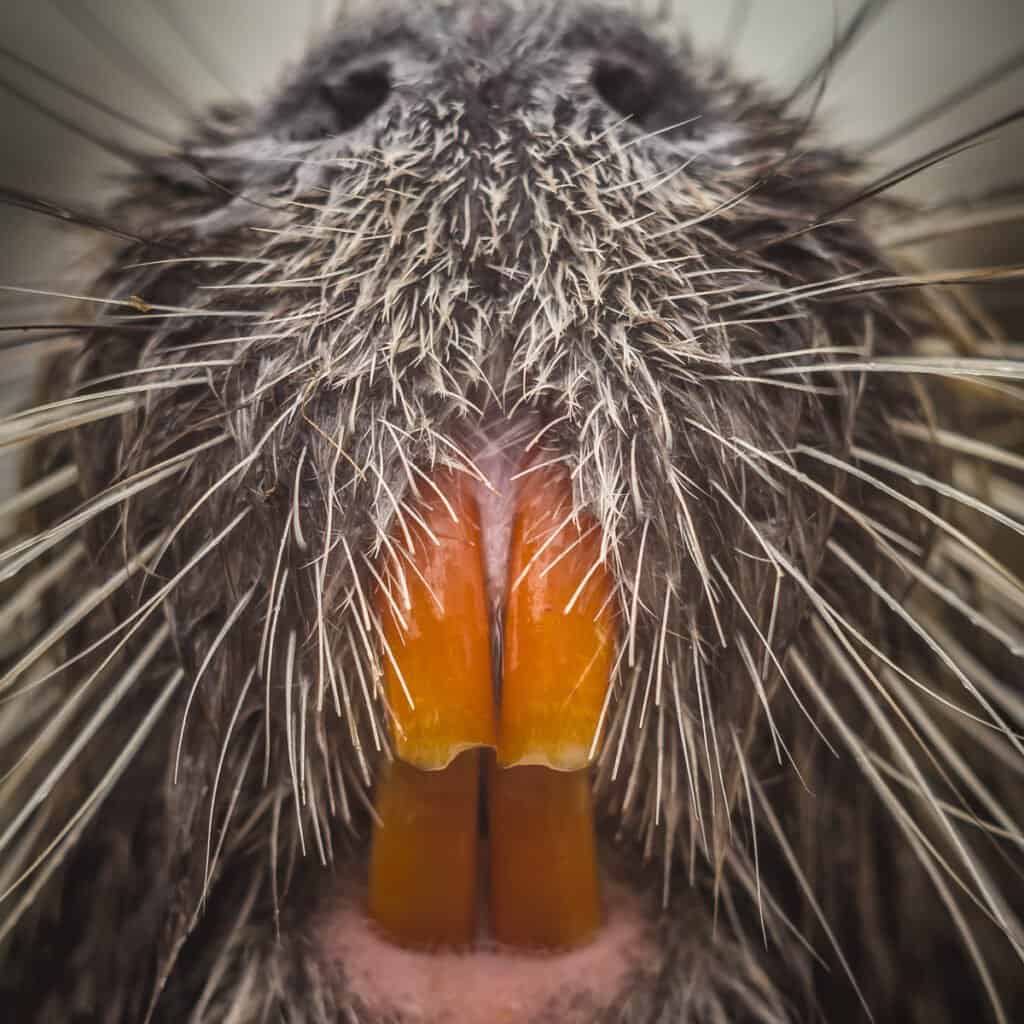
The orange or brown coloration of beaver teeth is due to their naturally high iron content.
©Martin Janca/Shutterstock.com
Beavers have to have strong teeth to chew through wood. Because of this, their bodies have to be equipped for the job. The orange or brown coloration of beaver teeth is due to their naturally high iron content. The iron contained in these teeth reinforces the bite of this powerful rodent, which is necessary for its survival.
How Long Do Beavers Live?
A beaver in the wild has a lifespan of 10-12 years. That’s not too bad for our furry little buddies! Some captive counterparts have lived up to 19 years. Amazingly, these mighty critters never stop growing. The older the beaver, the larger it is. Due to this fact, elders of the species have reached up to four feet in size (including their tails).
Do Beavers Mate for Life?
Beavers have very tight family structures. They do mate for life and make up small family units of 2-8 animals. A group of beavers is a colony. A colony is made up of an adult pair and their growing young. The young will be the first and second-year offspring of the adult pair. Once the young reach maturity, they go off on their own and create the next generations of family units. If one of the two adults in a colony dies, the remaining beaver can and will find a new mate. Otherwise, a paired set of adult beavers is in it for the long haul.
What Do Beavers Eat?
Beavers are herbivores who prefer to ingest their building materials. They favor softwoods, but will opportunistically gnaw down and utilize most forms of wood. Along with wood, they like to eat twigs and soft vegetation. Their diet often includes cattails, water lilies, and watercress. They also snack on various grasses, apples, clover, and ragweed. They’ll even eat tough brush like sagebrush if pickings are slim.
Do Beavers Have Predators?
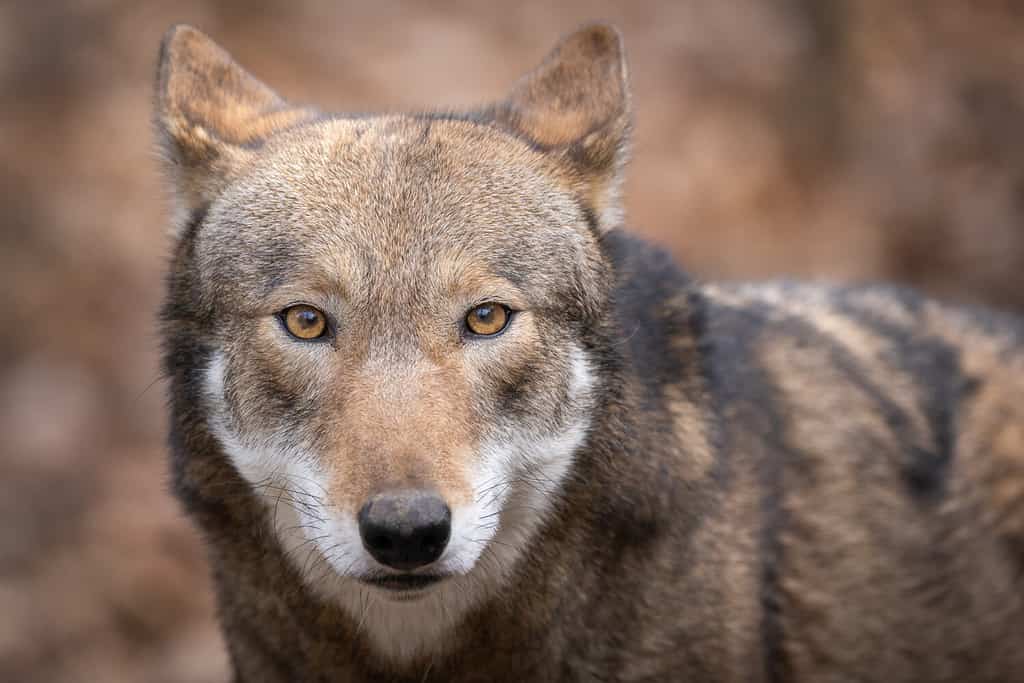
Wolves are common predators of beavers.
©Matt Cuda/Shutterstock.com
As herbivores, beavers do not prey on other animals. But other animals do prey on them. Humans are one of their predators, actually. Beaver fur is very thick, soft, and warm, and humans have hunted them for their coats for a very long time. Aside from humans, wolves, black bears, eagles, wolverines, bobcats, owls, and foxes are all predators of this semi-aquatic rodent. Unfortunately, the world is a dangerous place for a beaver, and its ability to create its own habitat and lodging is one of its many advantages in staying alive.
Are Beavers Friendly?
When we ask if an animal is friendly, we are often asking if we can interact with it. It is best to leave wildlife alone unless it needs help and you are a professional. Beavers are fairly docile animals and like to be left alone. A beaver will rarely, if ever, approach a human, but it is capable of aggression if it feels cornered or threatened. It is best to leave these peaceful creatures alone. They mean humans no harm, and we can work to ensure that we do not harm them, either.
Are Beavers Intelligent?
Beavers are very smart animals. Indigenous beliefs hold that beavers are the “sacred center” of the lands they inhabit. This is due to the work beavers do to alter – and often improve – their habitats for themselves and other creatures around them. Beavers have nearly unparalleled architectural and engineering skills in the animal kingdom, and wetlands that beavers inhabit often have elevated levels of health and biodiversity. We can confidently say that beavers are highly intelligent critters.
How Long Does it Take a Beaver to Make a Dam?
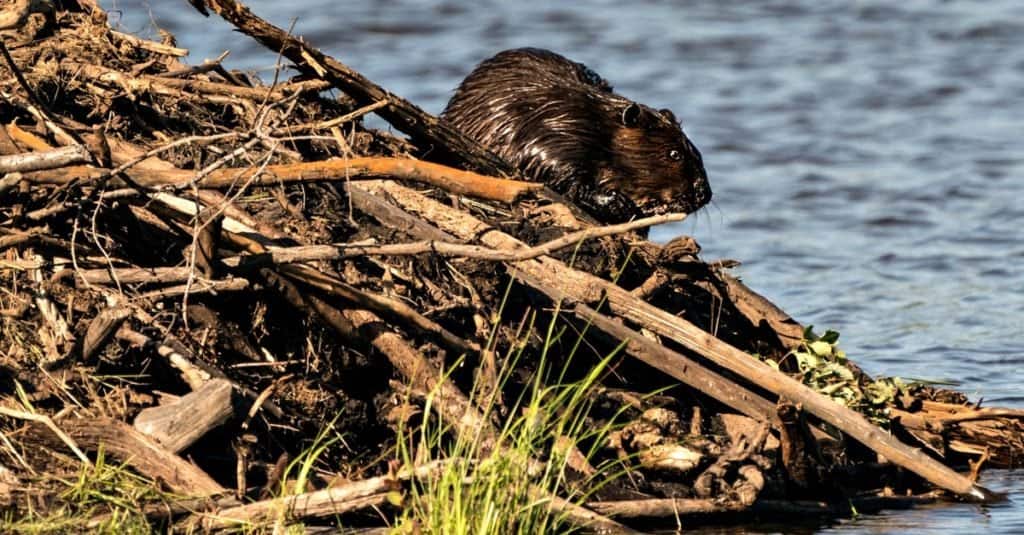
It only takes beavers up to 24 hours to construct a water-tight dam!
©Rejean Bedard/Shutterstock.com
It only takes beavers up to 24 hours to construct a water-tight dam! Isn’t that incredible? While actual timing varies based on the size of the dam, these impressive critters waste no time in their preparations. By damming water, beavers flood an area and provide new and rich riparian habitats for a variety of creatures, such as fish and shorebirds. This also increases the surface area of drinking water for land mammals and provides many nutrients for plants and other life forms.
Are There Other Perks to Beaver Dams?
Did you know that beaver-inhabited areas are 3 times more resistant to fires, including deadly wildfires? Beaver habitats actually provide refuge for several species of animals that have survived wildfires. The beaver is the protector of the waterway and engineer of lush riparian habitats. The ecological benefits of a beaver population far outweigh the detriments! Beaver dams help remove toxins from waterways, help mitigate the effects of climate change, and provide water sources to wildlife during droughts. Overall. beavers and the structures they erect are beneficial to local ecosystems.
How Do I Stop Beavers From Chewing On My Trees?
People who live near riparian zones sometimes struggle with beaver damage. Beavers are opportunists who do not understand or care for the preferences of humans. You can take preventative measures by coating the trunks of your trees with paint and sand. Use latex paint to help the tree properly oxygenate, and masonry sand. You can also build wire cages around your trees.
Are Beavers Endangered?
At one point in history, beavers were overhunted. It is estimated that the beaver population across North America actually dropped to less than 100,000 at one point in time. Luckily, they have significantly rebounded since then. While trapping, hunting, and killing beavers for recreation and fur still pose a threat to these furry helpers, their numbers have greatly improved since the recession of the fur-trading industry. Now, the beaver population in the United States soars above 10 million, and beavers have reclaimed many of their native habitats. This means that they are not endangered in the United States. However, both the American and Eurasian beavers have faced the threat of extinction before, and could again if we do not continue to protect their habitats.
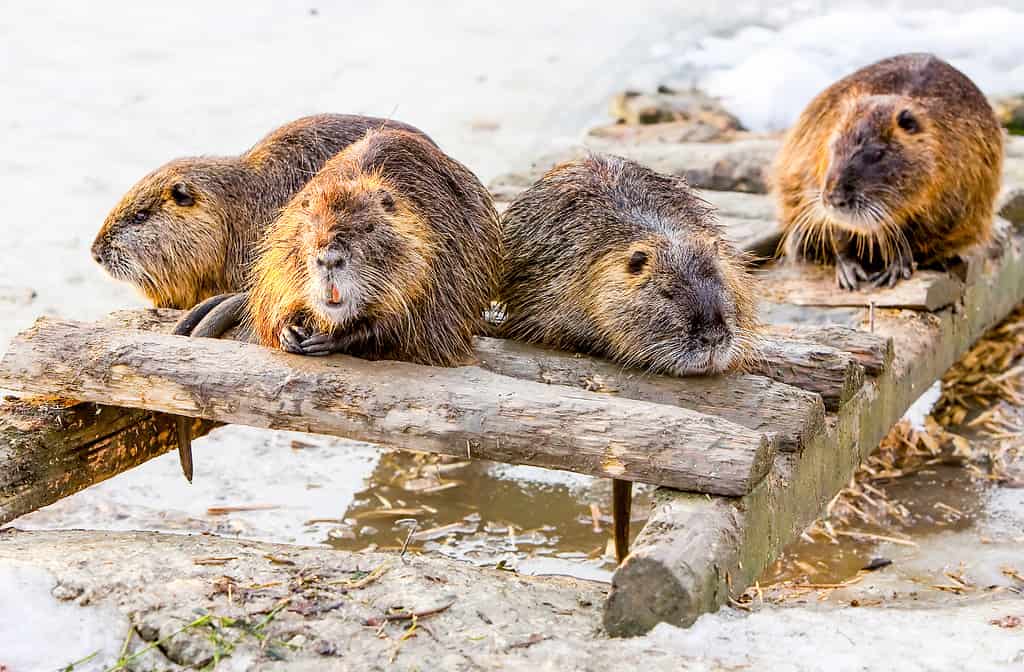
Currently the beaver population in the United States soars above 10 million.
©Ammit Jack/Shutterstock.com
Do Beavers Carry Disease?
Giardia, a microscopic parasite that causes Giardiasis, has been tied to beaver populations. A singular case in Canada that left several hikers sick with diarrheal Giardiasis has given the disease the nickname ‘Beaver Fever.’ Unfortunately for beavers, this event has given them a bad reputation. It is true that beavers can and sometimes do carry Giardia, but studies from multiple universities suggest that they are often just a scapegoat. Often, human fecal matter is much more to blame than beaver fecal matter.
Other than a potential link to Giardia, beavers do not carry express danger to humans or pets by way of disease.
Fun Facts
- Beavers slap their tails against the water to make a powerful sound. This sound wards off predators and alerts other beavers to potential dangers.
- Beavers are the largest rodent in North America!
- Beavers can swim up to 5 mph and hold their breath for up to 15 minutes underwater.
- Beavers have favorite woods – such as willow, aspen, and poplar – and they use them both as food and shelter.
- Beavers have human protectors. The Beaver Institute works to protect and celebrate these massive, semi-aquatic rodents.
Thank you for reading! Have some feedback for us? Contact the AZ Animals editorial team.

